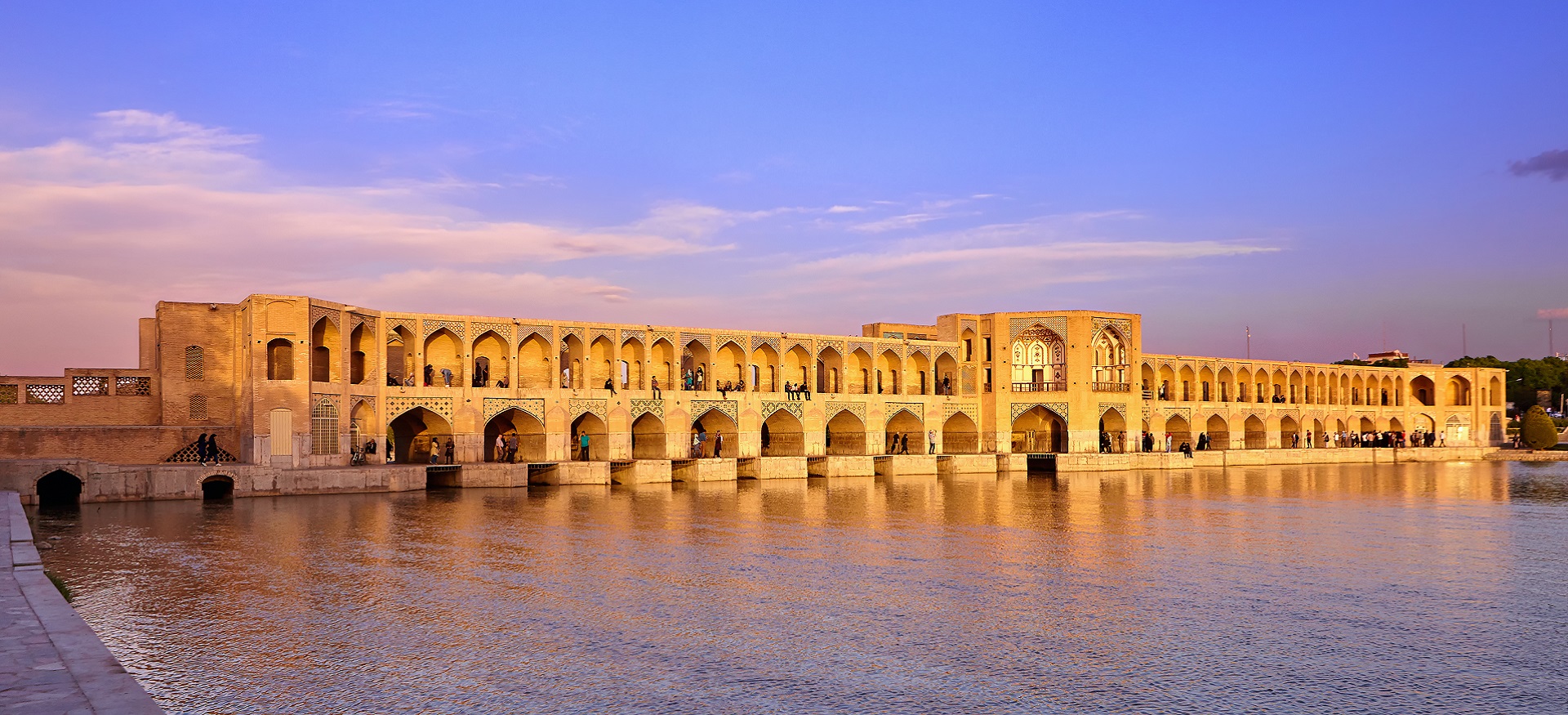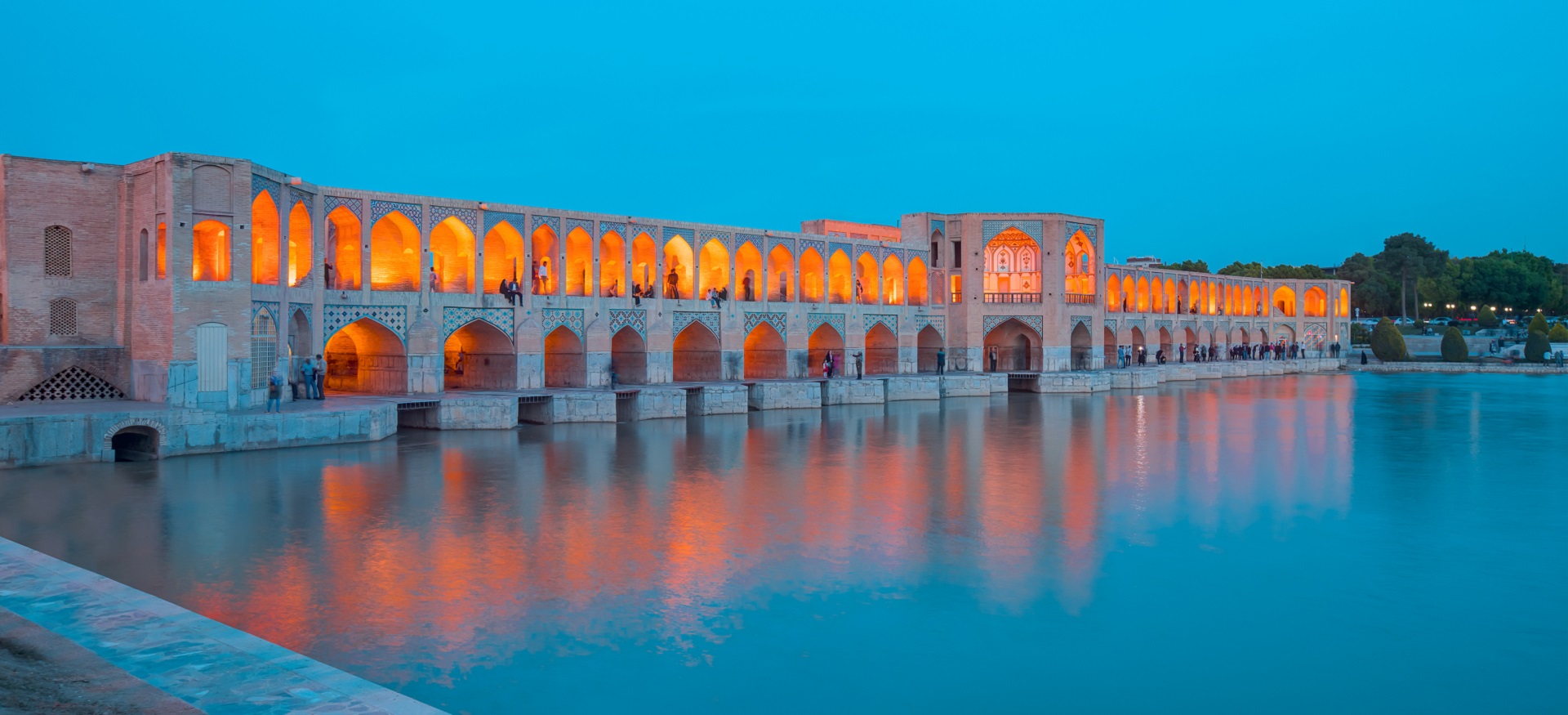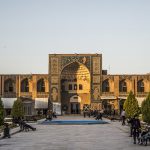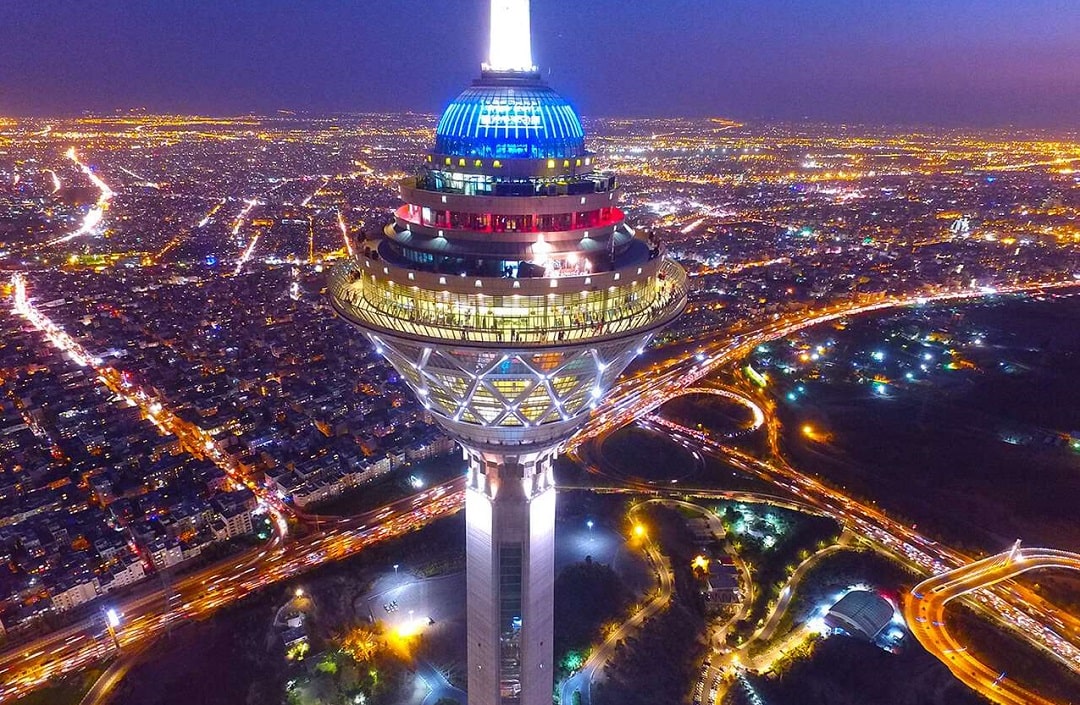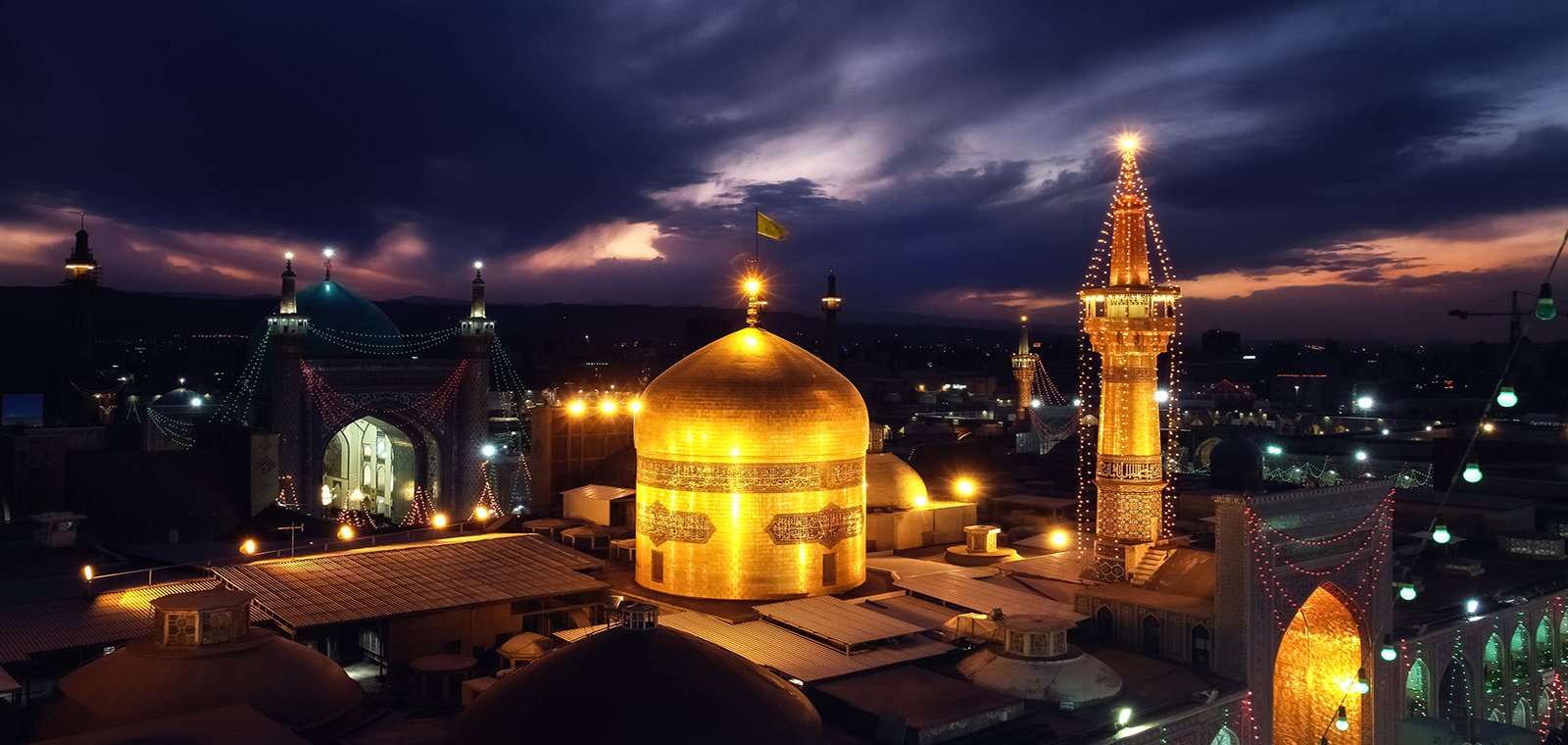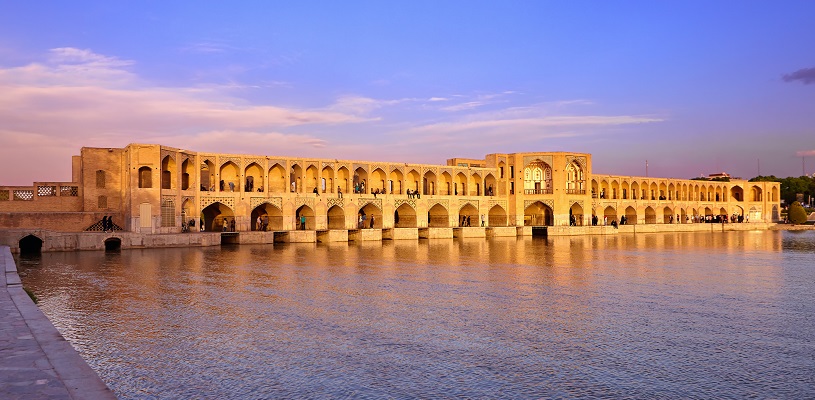
Khaju Bridge (Khajoo Bridge), Isfahan, Iran
Khaju Bridge (also spelled Khajoo), one of the most beautiful bridges of the 17th century world, is a historical bridge on Zayande Rud river, Isfahan. Walking on this bridge, especially in the evening and early at night, is one of the most enjoyable activities that both tourists and locals like to put in their program. In addition to beauty, it has secrets and wonders that make many people step on the bridge. Join me to show you a piece of all these beauties.
Contents
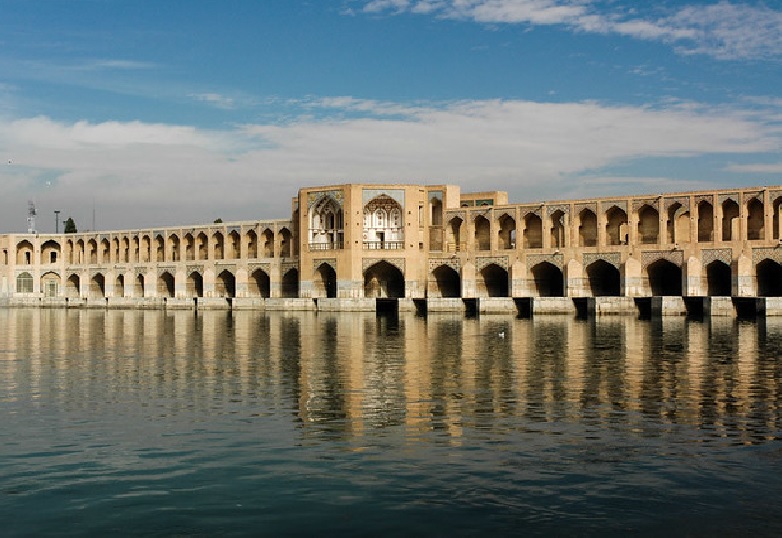
The Facade of Khaju Bridge
Why Visit Khaju Bridge?
- This Bridge is one of the significant attractions of Isfahan that has a lot of historical value.
- It has special and valuable tile decorations and paintings.
- It’s a popular place for photography and walking.
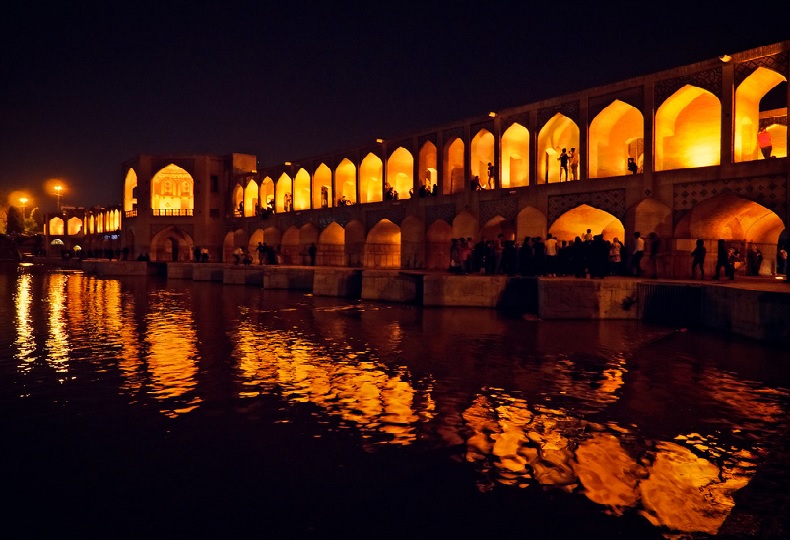
Khaju Bridge at night
The Story of Khaju Bridge
Over the remains of a Timurid era bridge that also acted as a dam, Shah Abbas II of Safavid dynasty (1501 to 1736) built Khaju Bridge. In different eras, Zayandeh Rud was used for connecting the two parts of Isfahan. But this wasn’t its only function in Safavid era. They also used it for watching sailing races, and entertaining the king and his companions. Plus, there is a special building in the middle of this Bridge. This part of the bridge was added to the complex as a temporary residence for the Safavid king and his family. There is an inscription in the southern part of the bridge. This inscription shows that the bridge was restored during the reign of a Qajar king (19th century).

Khaju Bridge
Architecture of Khaju Bridge
According to some architectural sources, the function of Khaju Bridge is similar to Tehran’s Tabiat Bridge and instead of being just a place to cross over, it has been a great place to stop by and enjoy the surroundings. The bridge is in 4 floors. And it is made of stone, brick and mortar. The beautiful decorations and unique tiles in the middle building of this bridge have made it a prominent building among the historical monuments of Isfahan.
In the eastern part of the bridge, you can see 2 platforms. In the middle part, there is a relatively large cobblestone at the bottom of the river. From the riverbed to the bottom of the bridge, there are 11 stone steps. The bridge also acts as a dam. The sharp shape of the bridge feet at the top, minimizes the pressure of the river water on the bridge like a breakwater. The shape of the bottom part of the bridge is like a step. So water flows on the step during floods. In this way, it loses its destructive energy by colliding the stairs. When a flood occurs, Khaju Bridge carries water to a series of canals and spreads them. Thus not only does the flood not damage the city, but it also fills the aquifers.
Khajoo Bridge – The Harmony of the Design
In the construction and decoration of the arches, unique paintings and tiles have been used. These decorations have made the bridge more special and beautiful than other bridges built on Zayande Rud. You can see symmetry and proportion in the design of Khaju Bridge. So that all the details are along with a regular rhythm and harmony. One of the interesting points about Khaju Bridge is the variety of designs in the bridge spans.
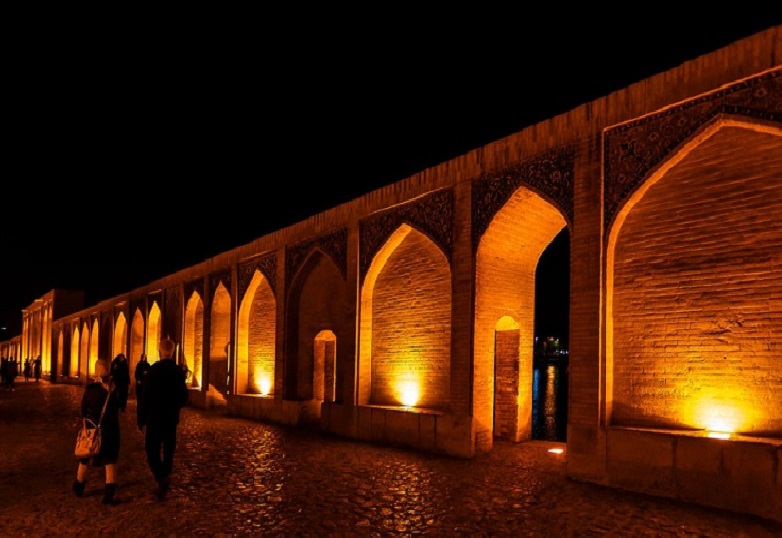
Khaju Bridge
Secrets of Khaju Bridge Isfahan
1. Stone lions guarding Khaju bridge
On both sides of this bridge, there are beautiful stone lions. On the stone lions there are signs of ancient sports that have been a symbol of sports in ancient times. If you stand next to one of the lions and look into the eyes of the lion in front of you, the eyes of that lion will shine. Some believe that these two stone lions are a symbol of Bakhtiari troops, a troop from a Persian tribe in Isfahan, who bravely protect Isfahan and Zayande Rud. In addition, you can see symbols of ancient sports on the bodies of these sculptures.
2. Candles hidden in the arches of Khaju Bridge
One of the exciting parts of this bridge is the presence of hidden candles. If you go to the lower floor of the bridge and stand at the end of the bridge edge, at a 39-degree angle, the arches of the Bridge look like candles. These candles are clearly visible.
3. An open-winged eagle on Khaju Bridge
If we look at this bridge from a far distance, from above, at sunset and when there is a shadow of the bridge, you will notice the shadow of an eagle that has opened its wings to fly.
4. The mysterious tombstones of Khaju Bridge
In 2009, reconstructions and restorations have been done on Khaju Bridge. By which, a number of valuable and carved tombstones were discovered. There were strange marks on them. Some of them were destroyed, and a limited number of them have remained intact. The intact tombstones are now in a Stone Museum.
5. Special Materials
One of the clever features of the bridge is the use of a kind of mortar in it. The more water reaches to the mortar, the more resistant it becomes.
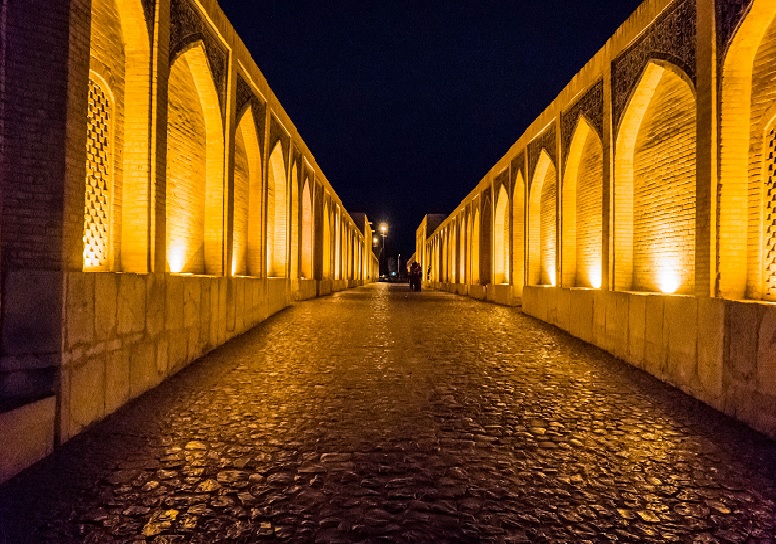
Khaju Bridge
More about Khaju Bridge
Visit hours
24 hours a day
Visit days
everyday
Nearby Attractions
Isfahan has lots of attractive and spectacular attractions. After visiting Khaju Bridge and enjoying unforgettable moments, you can also visit nearby places. Here are some of them: Naqsh-e Jahan Square, one of the largest squares in the world and a UNESCO World Heritage site. In Naqsh-e Jahan Square, you can visit Ali Qapu Palace, Sheikh Lotfollah Mosque, Shah Mosque and Qeysarie Gate, which are popular attractions in Isfahan. Si-o-se-pol is another famous bridge on Zayande Rud which is a popular and interesting place. Hasht Behesht Palace is one of the most beautiful palaces of Safavid era that enchants every viewer with its different architecture and unique decorations. Chehel Sotoun Palace is one of the most famous sights of Isfahan, it is a unique example of Persian art and its garden is a famous Persian garden.
Where to Eat Nearby
Nikan Restaurant Café
Si-o-se-pol Restaurant
Highland Fast Food and Restaurant
Hermes Restaurant Café
Like to take a walk on Khaju Bridge?
Then join our Nights of Isfahan tour or one of our multi-day Cultural Tours.

